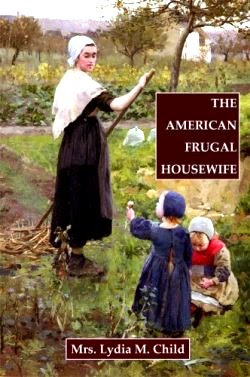Bread making is much easier than when I learned to make it; in my mother's kitchen, with "cake" yeast, 5 loaves at a time in a big, old bread mixing pan. I have tried all the newer methods as they were developed – cool-rise, mixing some of the mixture in an electric mixer, bread machines, etc. My husband often brought home buddies for coffeetime on my baking days.
Today, we can quickly make bread with either a food processor or a large electric mixer – it’s efficient, quick but still satisfying to show off that fragrant loaf of bread, buns or sweet breads and rolls. I'm a firm believer that the best bread is made in a kitchen where bread is made often - where a little natural yeast spores are in the air from regular bread making.
Here are some of the things I do now - I convert all recipes I try to use these methods.
Instant Yeast –
• Just add it to the dry ingredients. No need to “proof” the yeast. Saves time rising too.
Instant yeast is almost twice as fast to rise as active dry yeast. Because it has very little "dead" yeast cells, it has a good, yeasty flavor. Even Cook's Illustrated liked it.
If you are using an old recipe, be sure to add the "proofing" liquid to the rest of the liquid called for.
• Try “instant yeast” or “rapid rise” yeast from Fleishmann’s, Red Star or SAF. I buy 1# bags of Fleishmann’s instant at a good price. Those little packages are EXPENSIVE unless you bake very seldom.
• Keep your yeast in the freezer except for a small, tightly sealed jar in the fridge.
Instant Read Thermometer –
• Use an instant read thermometer to check the temperature of the water you add to your dough. Too hot will kill your yeast, and too cool won't let it get started.
• If you want to know if your bread loaf is done, use an instant read thermometer poked a little way into the end of the loaf. If it is over 190° your loaf is done.
Kitchen Scale –
• Use a kitchen scale for weighing ingredients – flour and shortening right into the bowl. Saves time and improves accuracy.
• Use the scale for weighing the dough for multiple loaves or buns, etc. They’ll bake in the same time.
Dough Rising and Shaping–
• Let your dough rise right in your food processor or mixing bowl. Saves washing an extra bowl.
• Don’t “punch” down your dough before shaping into loaves or rolls. Just roll it out to remove big bubbles, or knead gently a few times. Otherwise you remove too much of the “rise”.
• When shaping dough, be sure to pull it taut, to make a skin on it. This helps keep the dough’s shape.
Cooking Spray –
• Try just a little cooking spray on the kneading surface, hands and rolling pin (if needed). If this doesn’t work for you, use just a thin sprinkling of flour. Don’t add a lot of flour to your dough, it leaves streaks because it is too hard to knead in.
Covering and shaping your dough-
• If your mixer doesn’t have a cover, top your dough with a plastic cover or plastic wrap. Forget about cloths over your dough; it lets it dry out. I purchased the plastic lids available for my Kitchenaid – very useful. In your food processor, just leave the lid on.
• Try a silicone baking mat or plastic cutting mat for handling your dough – it’s easier to clean and keeps dough from sticking. I use a board lightly dusted with flour when I have larger amounts to bake.
• Cover your shaped dough with plastic wrap or waxed paper sprayed with cooking spray. Gently remove it before putting the dough in the oven.
• If you are making dough in loaf pans, let it rise so the center of the loaf is about 1” or so over the rim of the pan. If your oven is hot enough, it will rise some more in the oven – “oven spring”. If you let your loaf rise too high it may collapse in the oven.
Finishing and storing your bread –
• If you want a soft, shiny crust, brush your loaf with a little warm butter (not cold from the fridge).
• Don’t cut your bread until it is cold. Use a serrated bread knife or electric knife.
• Freeze your rolls or sliced bread after they are cold. Take out just the number of slices or rolls you need, let thaw, covered or reheat in the microwave. Cook's Illustrated says the microwave method is best.
Practice - Practice - Practice. You can become an expert home bread baker just like Grandma - and your family will love it. When I was a kid, we always knew which mom in the neighborhood was baking that day - we made sure we got there about the right time!
Subscribe to:
Post Comments (Atom)



















Thanks for sharing your tips. I'm still kind of a newbie at bread making, and more often than not have issues with it.
ReplyDelete